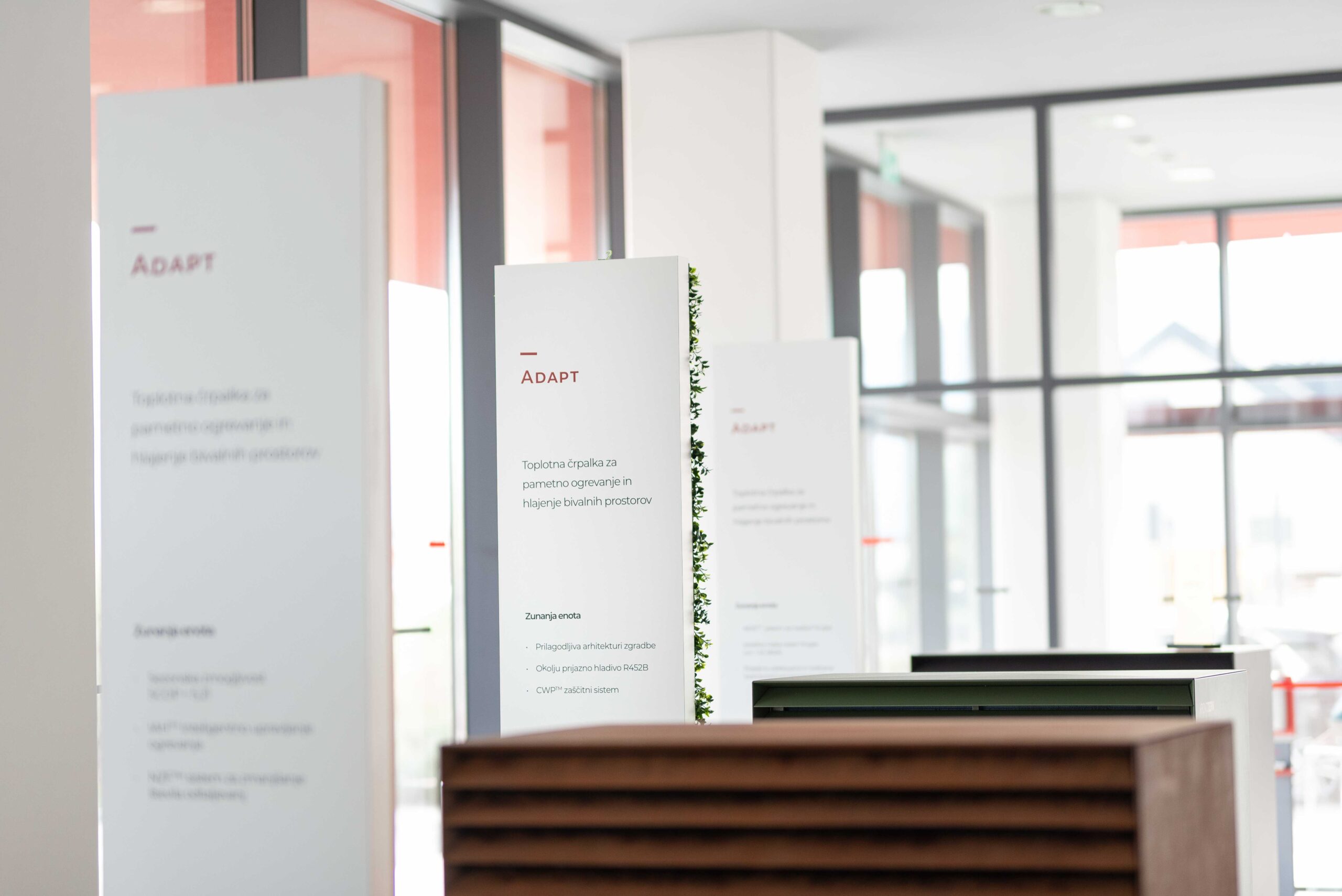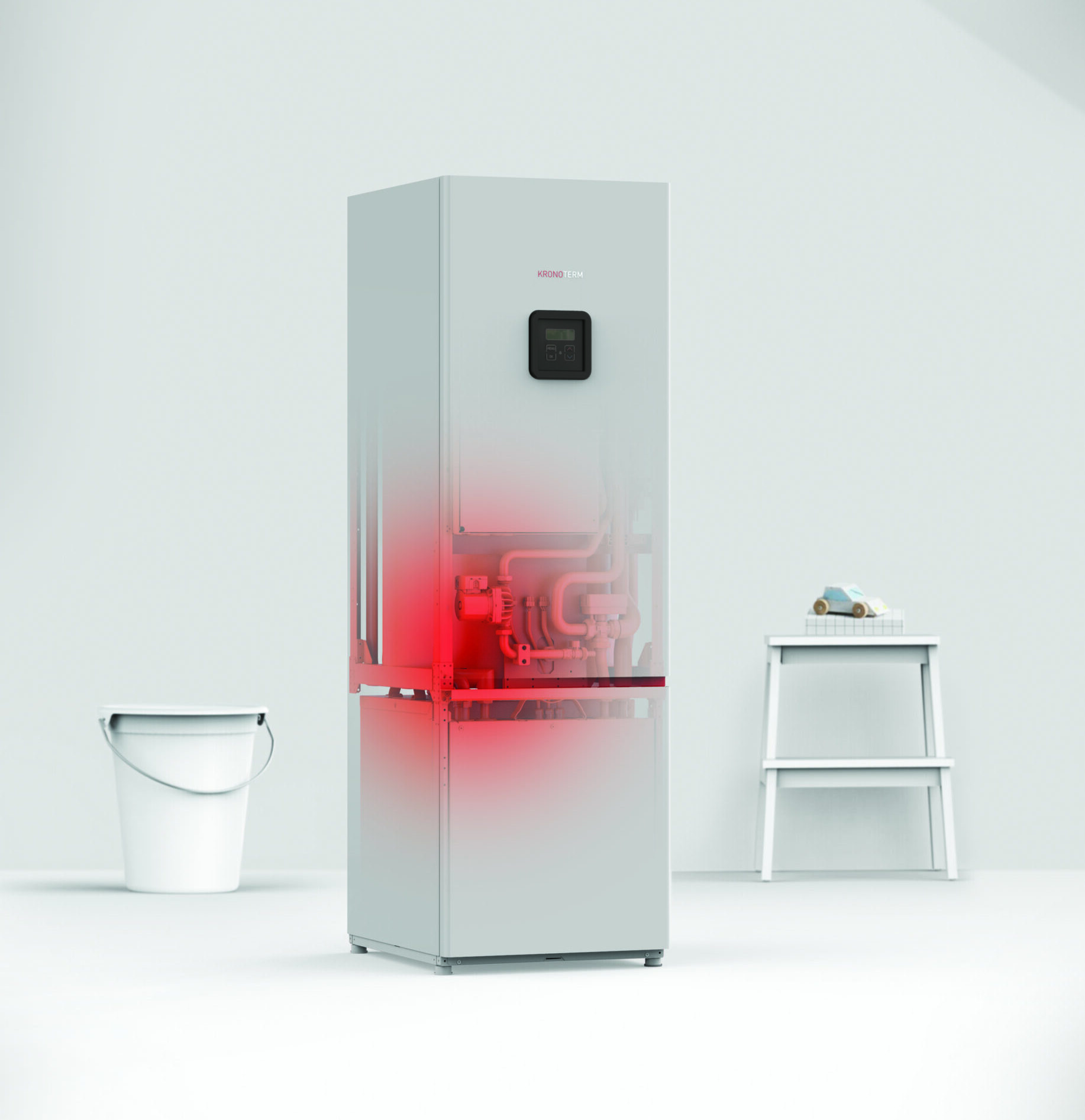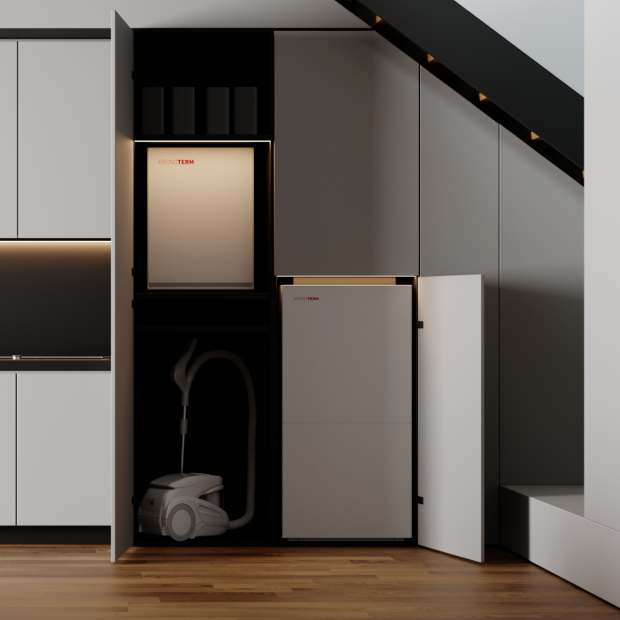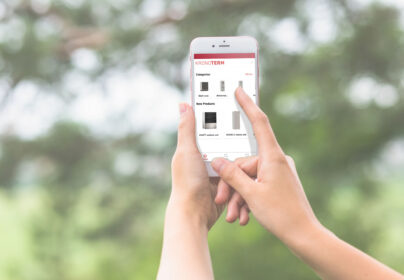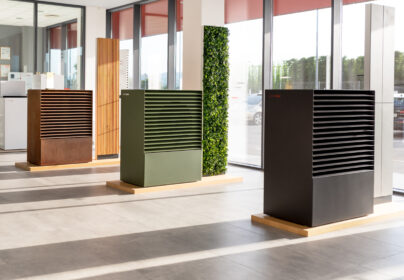Heat pumps operate on the principle of interdependence between temperature, pressure, and the volume of gas or refrigerant. If we reduce the pressure of the gas, the temperature decreases; if we increase it, the temperature rises. The operation takes place with the help of three circuits: the first is the heat source (air, ground, or water), the second is the so-called refrigeration circuit, which includes only the heat pump, and the third is the heating system (underfloor heating, radiator heating, or hot water heater).
Heat pumps transfer (pump) thermal energy from the heat source (ground, water, or air) to the heating system using electrical energy. This happens in a closed circuit, where the liquid working medium (refrigerant) evaporates, compresses, and liquefies again. This is the only way to raise the thermal energy from a lower temperature level to a higher level. The refrigerant remains in the circuit and is not consumed or released into the environment.
Air/Water Heat Pumps
How does an air/water heat pump work? Air is an endless source of energy and is available everywhere. The latest air/water heat pump designs allow heating even at an outside temperature of up to -25 °C. Even at such a low air temperature, you can still save 50% of energy. This is the most cost-effective type of heat pump, and both installation and maintenance are simple and inexpensive. Air/water heat pumps are usually designed to independently cover all heat losses of the building up to an outside temperature of -5 °C. Below this threshold, the heat pump can operate with another heating source. This way, we can cover more than 98% of the heat requirements of the building with the operation of the heat pump. For new buildings, an electric heater is usually used as the second heating source, while in existing buildings with a good conventional heating source, it can also be used. Electronic control allows easy setting of the switching point to the second heating source.
Water/Water Heat Pumps
How does a water/water heat pump work? Groundwater heat is a very favorable energy source for a heat pump. Its advantage lies in a relatively constant temperature level, approximately between +7 and +12 °C. To utilize groundwater, two boreholes are drilled near the building, one for extraction and the other for the return of groundwater. A submerged pump is inserted into the extraction borehole. During operation, the pump pushes water through the heat pump, where it extracts thermal energy and returns it, cooled by a few degrees Celsius (from 2 to 4 °C), through the other borehole, located a few meters away (15–20 m), back into the groundwater. The amount of water in the suction well must be sufficient for continuous operation during peak heating demands. A water permit is required for groundwater pumping, and the water must be chemically analyzed before starting the work. Groundwater is an ideal heat source due to its relatively high temperature, resulting in high coefficient of performance (COP) values for the heat pump. The COP is the ratio of useful thermal energy to the supplied electrical energy for operating the compressor and other electrical devices in the heat pump. High-quality air-to-water heat pumps have a COP above 3, meaning that for 1 unit of invested electrical energy, we obtain 3 units of thermal energy.
Water-to-water heat pumps provide a significant thermal output with very small external dimensions. The robust and innovative design is further enhanced by a special plate heat exchanger made of stainless steel, which transfers heat from one fluid to another.
Ground/Water Heat pumps
Geothermal heat pumps (ground/water heat pumps) harness the thermal energy stored in rocks or the earth. A substantial amount of solar energy is stored there, which can be utilized for heating homes and/or domestic water. The amount of energy that can be extracted from the earth depends on the soil composition, heat pump capacity, and the utilization method. Heat is extracted using a liquid circulating in a closed pipe system, either laid at a depth of 120–130 cm (horizontal collector) or inserted into wells ranging from 60–140 m deep (vertical probe). The circulating water transfers heat to the heat pump, which, with the aid of added electrical energy, elevates it to a higher temperature level (up to 63 °C), returning it cooled by approximately 4°C.
Cooling with the Help of a Heat Pump
Although heating and cooling are opposing temperature processes, a heat pump combines them. Heat pumps provide cooling actively on the primary level (reversible heat pumps, where the compressor operates during cooling) and passively (in geothermal heat pumps and water/water heat pumps, where only primary pumps operate). On the secondary level, the transfer of cold air to spaces must also be ensured, achievable through dynamic cooling (convectors) or quiet cooling (floor or wall cooling).
The most efficient and cost-effective heating-cooling systems are reversible air/water heat pumps. These enable economical heating of spaces and domestic water in winter and heating of domestic water and cooling in summer. Some special designs allow utilizing waste heat from cooling for heating domestic water or even a pool during the cooling mode. Reversible air/water heat pumps, providing effective heating in winter and cooling in summer, offer the simultaneous heating of domestic water in both modes. KRONOTERMOVE air/water heat pumps come with a built-in feature for both heating and cooling spaces.
In commercial buildings, convectors are often installed for both cooling and heating. The advantage of convectors in cooling is the ability to remove moisture from the air, reducing the need to lower the desired cooling temperature significantly. However, convectors (especially for heating) must be sized more generously to heat at lower hot water flow temperatures. Every Celsius degree reduction in the flow temperature represents a 2.5% improvement in the efficiency of the heating system with a heat pump.


